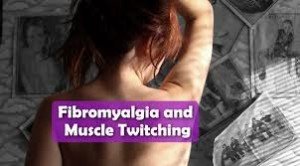
A leading fibromyalgia expert comments about muscle twitching and what you can do about this.
Many people with fibromyalgia experience twitching of their muscles. This can be very annoying and even interfere with sleep.
“Muscle twitching, called fasciculations, are very common in fibromyalgia,” says Jacob Teitelbaum, MD, medical director of the Fibromyalgia and Fatigue Centers nationally, and author of “The Fatigue and Fibromyalgia Solution.”
“They will decrease after proper treatment with the SHINE Protocol for fibromyalgia (Sleep, Hormones, Infections, Nutrition, Exercise),” continues Dr. Teitelbaum.
People without the pain disorder have been known to experience a lot of benign muscle twitching, and one of the most recommended solutions is magnesium.
“Magnesium is especially helpful,” says Dr. Teitelbaum. This is because this mineral, if insufficient in your body, can lead to fasciculations or make existing fasciculations more pronounced.
The SHINE Protocol consists of:
• Sleep. Get 8-9 hours!
• Hormones. See an endocrinologist to get tested for any hormone deficiencies.
The blood testing is very thorough but worth it, as hormone deficiencies can play a role in your pain disorder.
• Infections. An infection can contribute to, or even cause, FMS. You may have an infection and not even know it.
A perfect example of a sneaky infection is that of sinusitis, which can cause headaches that you think are solely caused by fibromyalgia! Get prompt treatment for all infections.
• Nutritional supplements. Acetyl l-carnitine, glutathione and vitamins A, the B’s, C and D will help reduce muscle twitching when taken in therapeutic doses.
• Exercise. Though FMS can cause exercise intolerance, following the four steps above will increase your tolerance.
Muscle twitching is most pronounced during inertia. If you have fibromyalgia, exercise as well as you can, but keep in mind that exercise can cause fasciculations (which is perfectly normal).

 is a board certified internist and nationally known expert in the fields of fibromyalgia, chronic fatigue syndrome, sleep and pain.
is a board certified internist and nationally known expert in the fields of fibromyalgia, chronic fatigue syndrome, sleep and pain.











